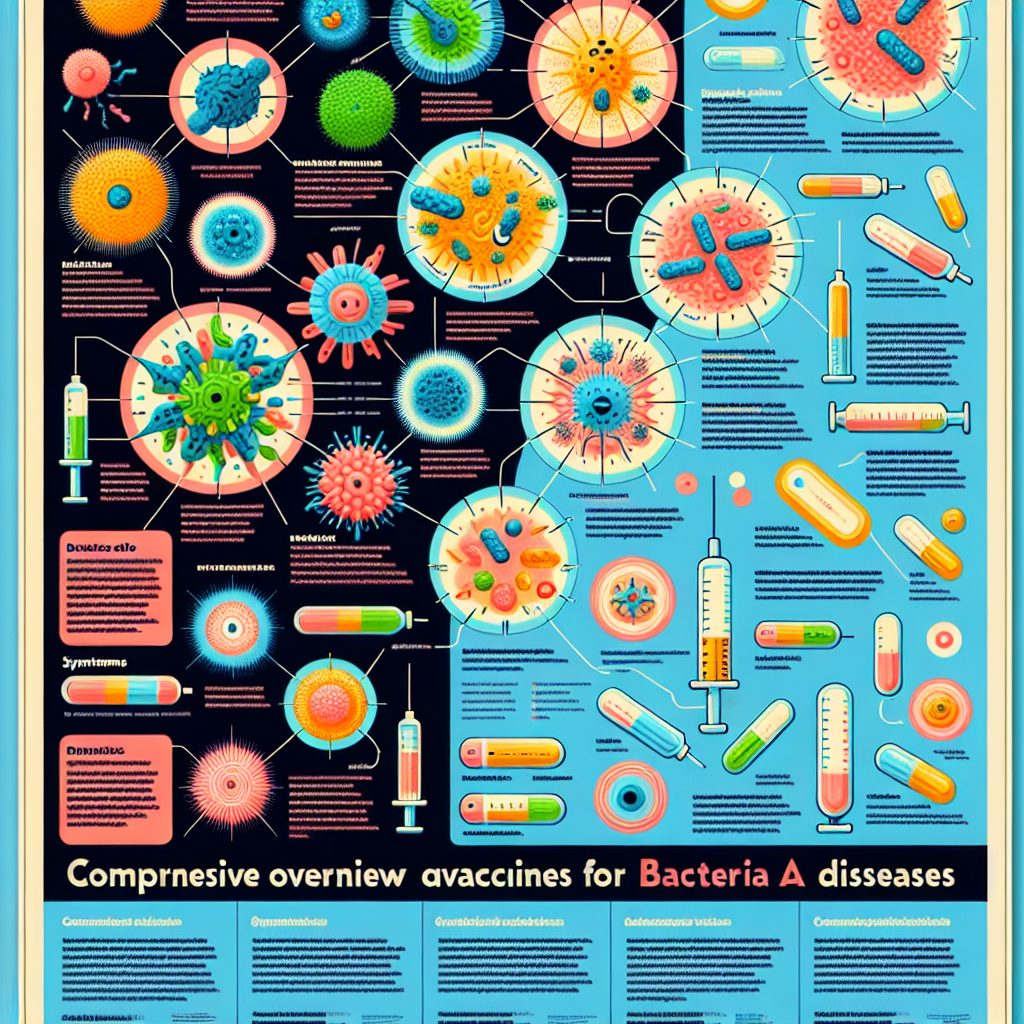Amidst the relentless threat posed by bacterial diseases, the role of vaccines has emerged as a beacon of hope. Vaccines available for bacterial diseases are not just preventative measures; they represent a transformative strategy in public health and individual well-being. As we grapple with the consequences of antibiotic resistance and outbreak fears, the importance of immunization cannot be overstated. Understanding how these vaccines work and the specifics of their efficacy is crucial for making informed health choices.
In an era where bacterial infections continue to claim countless lives, it becomes imperative to address the widespread misconception surrounding vaccine effectiveness. Many individuals remain unaware of the significant advancements in vaccine technology that can safeguard populations against diseases like meningitis, whooping cough, and more. The stakes are high; one lapse in vaccination can lead to outbreaks that threaten public health. This article aims to illuminate the critical importance of bacterial vaccines, their efficacy rates, and the recommendations guiding their use.
From the foundational principles of immunity to the latest scientific findings, we will delve deep into the landscape of bacterial vaccines, equipping you with advanced insights that can empower your health decisions. By the end of this discussion, you will not only grasp how these vaccines function but also understand their role in combating the rising tide of bacterial pathogens that challenge our communities.
Understanding the Role of Vaccines in Preventing Bacterial Diseases
Vaccines for bacterial diseases function by stimulating the immune system to recognize and combat specific pathogens. The approach is revolutionary: instead of relying solely on antibiotics, which face increasing resistance, vaccines train the body to prevent infections before they occur. By introducing a harmless piece of the bacterium—such as inactivated toxins or weakened forms—vaccines prompt the body to produce antibodies. These antibodies remain vigilant, ready to neutralize the actual bacteria should exposure occur.
The significance of vaccination extends beyond individual protection; herd immunity is a critical concept that underscores its community-wide benefits. When a substantial portion of the population is vaccinated, the spread of infections diminishes, offering protection even to those who cannot be vaccinated due to medical conditions. This collective immunity is essential in safeguarding vulnerable populations, including infants, the elderly, and immunocompromised individuals, from severe bacterial infections that could have otherwise devastating effects.
Moreover, the economic implications of widespread vaccination are profound. Preventing bacterial diseases not only saves lives but also reduces healthcare costs associated with treatment and management of outbreaks. Vaccines lead to lower hospitalizations, decreased absenteeism in schools and workplaces, and, ultimately, a healthier society. As we explore the various types of bacterial vaccines, it becomes clear that these immunizations are vital in fostering enduring public health and safety.
Key Bacterial Vaccines: Efficacy, Types, and Recommendations
When discussing vaccines available for bacterial diseases, several key players emerge, each crafted for specific pathogens. For instance, the DTaP vaccine protects against diphtheria, tetanus, and pertussis (whooping cough), demonstrating high efficacy rates, especially when administered in early childhood. Studies show that the DTaP vaccine is about 80% effective in preventing whooping cough in infants. Given the resurgence of pertussis in recent years, vaccination schedules are critical to maintain herd immunity and protect our communities.
Another significant vaccine is the pneumococcal vaccine, which guards against pneumonia and other serious infections caused by Streptococcus pneumoniae. The two main types—PCV13 and PPSV23—offer protection against multiple serotypes of the bacteria. Research indicates that these vaccines can prevent more than half of the invasive pneumococcal diseases in children and adults. Recommendations suggest that all children under 2 years and adults over 65 should receive these vaccines to mitigate risks.
Meningococcal vaccines, including MenACWY and MenB, are also paramount, particularly for adolescents and college students. Meningococcal disease can lead to severe complications and rapid deterioration, making vaccination essential. The efficacy of these vaccines can reach up to 85% against certain strains, and public health campaigns emphasize the importance of timely vaccination, particularly in outbreak scenarios. As we digest these insights, it’s evident that understanding vaccine types and their recommendations is crucial for informed health decisions.
In conclusion, the landscape of vaccines for bacterial diseases is intricate yet vital for public health. With the continuing emergence of antibiotic-resistant bacteria and the persistent threat of outbreaks, vaccination stands as our frontline defense. Armed with the insights presented here, you are better equipped to appreciate the importance of these vaccines and their role in safeguarding not just individual health, but community well-being as well. As we anticipate further advancements in vaccine technology, now is the time to engage in discussions with healthcare providers about vaccination schedules and recommendations to ensure that you and your loved ones are protected against these preventable diseases.
Essential Strategies for Preventing Viral Infections EffectivelyEssential Strategies for Preventing Bacterial InfectionsUnderstanding the Mechanisms of Virus and Bacteria TransmissionRelevant LinkRelevant LinkRelevant LinkUnderstanding Lower Back Pain Linked to COVID-19: Insights and ManagementUnderstanding COVID-19: Navigating Loss of Appetite ChallengesUnderstanding COVID Laryngitis: Symptoms, Causes, and TreatmentRelevant LinkRelevant LinkRelevant Link

